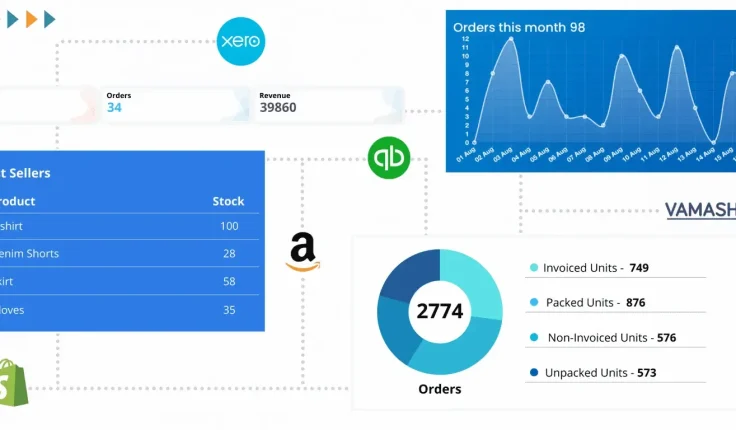The Ultimate Guide to Warehouse Management Systems and Inventory Software

Efficient warehouse management is the backbone of any successful supply chain. Whether you are a small business or a large enterprise, managing inventory accurately, optimizing warehouse operations, and streamlining procurement processes are crucial for profitability and customer satisfaction. This is where a warehouse management system (WMS) and inventory management software come into play.
What is a Warehouse Management System (WMS)?
A warehouse management system (WMS) is a comprehensive software solution designed to manage and optimize warehouse operations. From receiving and storing products to picking, packing, and shipping, a WMS ensures that every process in the warehouse runs smoothly.
Key features of a modern WMS include:
-
Real-time inventory tracking: Know exactly what stock is available, where it is located, and when it needs replenishment.
-
Order management: Efficiently manage order fulfillment with reduced errors.
-
Space optimization: Maximize warehouse space utilization by organizing inventory strategically.
-
Labor management: Track workforce productivity and assign tasks efficiently.
-
Reporting and analytics: Generate insights for informed decision-making and operational improvements.
By implementing a WMS, businesses can reduce operational costs, improve inventory accuracy, and enhance customer satisfaction.
Benefits of Warehouse Management Software
Warehouse management software is more than just a digital inventory tracker. It integrates multiple functions to ensure smooth warehouse operations. Some key benefits include:
-
Improved Inventory Accuracy
A warehouse management system minimizes errors in stock counts by tracking products in real time. This ensures that your inventory levels are accurate, reducing the risk of stockouts or overstocking. -
Enhanced Operational Efficiency
Automating warehouse processes speeds up workflows, from receiving to shipping. Employees spend less time searching for items, reducing labor costs and improving productivity. -
Better Customer Service
Accurate inventory management ensures that customer orders are fulfilled on time. With faster and precise order processing, businesses can maintain high levels of customer satisfaction. -
Reduced Operational Costs
A WMS helps optimize space and labor usage, minimizing unnecessary expenses. Efficient warehouse operations lead to cost savings in storage, transportation, and workforce management. -
Data-Driven Decision Making
Modern warehouse management software provides detailed reports on inventory trends, demand patterns, and warehouse performance, enabling data-driven strategic planning.
Understanding Inventory Management Software
While a WMS focuses on warehouse operations, inventory management software is designed to monitor and control stock across the entire supply chain. From procurement to sales, this software ensures that businesses have the right products at the right time.
Key features of inventory management software include:
-
Stock tracking: Monitor quantities, locations, and movement of inventory.
-
Reorder alerts: Receive notifications when stock levels are low to prevent stockouts.
-
Product categorization: Organize items by SKU, category, or supplier for easy tracking.
-
Integration with sales channels: Sync inventory with e-commerce platforms, POS systems, or ERP software.
-
Reporting and forecasting: Analyze trends to predict future inventory needs.
Using the best inventory management software can significantly reduce inventory-related losses and improve cash flow management.
Difference Between WMS and Inventory Management System
Although warehouse management systems and inventory management systems are closely related, they serve slightly different purposes:
| Feature | Warehouse Management System (WMS) | Inventory Management System |
|---|---|---|
| Focus | Optimizing warehouse operations | Tracking and controlling inventory |
| Functions | Picking, packing, shipping, receiving | Stock tracking, reorder alerts, reporting |
| Scope | Primarily warehouse-specific | Across entire supply chain |
| Goal | Improve operational efficiency | Improve inventory accuracy |
In many cases, modern software solutions integrate both WMS and inventory management functionalities, providing a unified platform for end-to-end supply chain management.
Choosing the Best Inventory Management Software
Selecting the best inventory management software depends on the specific needs of your business. Here are some key factors to consider:
-
Scalability
Ensure the software can grow with your business. A scalable solution accommodates increasing inventory, multiple warehouses, and additional users without performance issues. -
Ease of Use
A user-friendly interface ensures that your team can quickly adopt the system with minimal training. Complicated systems may slow down operations and reduce efficiency. -
Integration Capabilities
Your inventory software should integrate with existing systems such as ERP, POS, e-commerce platforms, and accounting software to streamline operations. -
Real-Time Tracking
Real-time inventory updates are critical for accurate decision-making. The software should provide instant insights into stock levels and warehouse activities. -
Cost
Consider both the initial investment and ongoing costs. Cloud-based solutions often offer subscription models with lower upfront costs compared to on-premises software. -
Support and Updates
Reliable customer support and regular software updates ensure that your system remains functional and up to date with industry standards.
Role of Procurement Software in Inventory Management
Procurement software is another essential tool that complements warehouse and inventory management. This software streamlines the process of sourcing, purchasing, and managing suppliers, ensuring that your business always has the necessary stock.
Key benefits of procurement software include:
-
Supplier management: Maintain detailed information on suppliers, contracts, and performance.
-
Automated purchase orders: Generate and send purchase orders automatically based on stock levels and demand forecasts.
-
Cost control: Monitor spending and negotiate better deals with suppliers.
-
Approval workflows: Ensure proper authorization before purchases are made.
-
Data analytics: Analyze purchasing patterns and optimize procurement strategies.
When integrated with a WMS and inventory management system, procurement software helps maintain optimal stock levels, reduces manual errors, and enhances overall supply chain efficiency.
Trends in Warehouse and Inventory Management
The landscape of warehouse management and inventory control is rapidly evolving. Key trends include:
-
Cloud-Based Solutions
Cloud-based WMS and inventory software offer real-time access, scalability, and lower IT costs. Businesses can manage multiple warehouses and remote teams with ease. -
Automation and Robotics
Automated picking systems, conveyor belts, and robotics are transforming warehouse operations. Integrating these technologies with WMS reduces human error and increases efficiency. -
AI and Predictive Analytics
Artificial intelligence and predictive analytics help forecast demand, optimize stock levels, and reduce carrying costs. AI-driven software can suggest reorder points and inventory allocation strategies. -
Mobile Integration
Mobile-enabled WMS and inventory apps allow warehouse staff to scan, update, and track inventory using handheld devices, improving accuracy and productivity. -
Sustainability and Green Warehousing
Businesses are adopting eco-friendly warehouse practices. Software that optimizes space and reduces waste contributes to sustainable operations.
How to Implement a WMS and Inventory Management System
Implementing a WMS or inventory management software requires careful planning:
-
Assess Your Needs
Evaluate your current warehouse operations, inventory challenges, and procurement processes to determine which software features are essential. -
Select the Right Software
Choose a solution that aligns with your business size, industry, and growth plans. Compare features, costs, and vendor support before making a decision. -
Data Migration
Ensure accurate migration of existing inventory data into the new system. Data integrity is critical for a successful implementation. -
Train Your Team
Provide comprehensive training to warehouse staff, procurement officers, and managers to ensure smooth adoption. -
Monitor and Optimize
After implementation, continuously monitor system performance, gather feedback, and make improvements to optimize warehouse operations.
Conclusion
A warehouse management system (WMS) combined with inventory management software and procurement software forms the backbone of an efficient supply chain. Businesses that adopt these technologies can benefit from improved inventory accuracy, reduced operational costs, enhanced customer satisfaction, and data-driven decision-making.
Investing in the best inventory management software ensures that your business remains competitive in today’s fast-paced market. By leveraging WMS, inventory, and procurement software, you can streamline operations, minimize errors, and maintain optimal stock levels, ultimately driving business growth and profitability.
- TAGS :
Related Posts




















